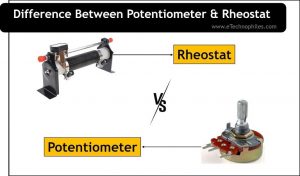Last updated on March 21st, 2024 at 11:41 am
A potentiometer and a rheostat may seem similar from the application perspective since both are used to control the flow of current in a circuit or vary the resistance. But there are some important differences between them. A potentiometer has many applications, one of which is using it as a rheostat.
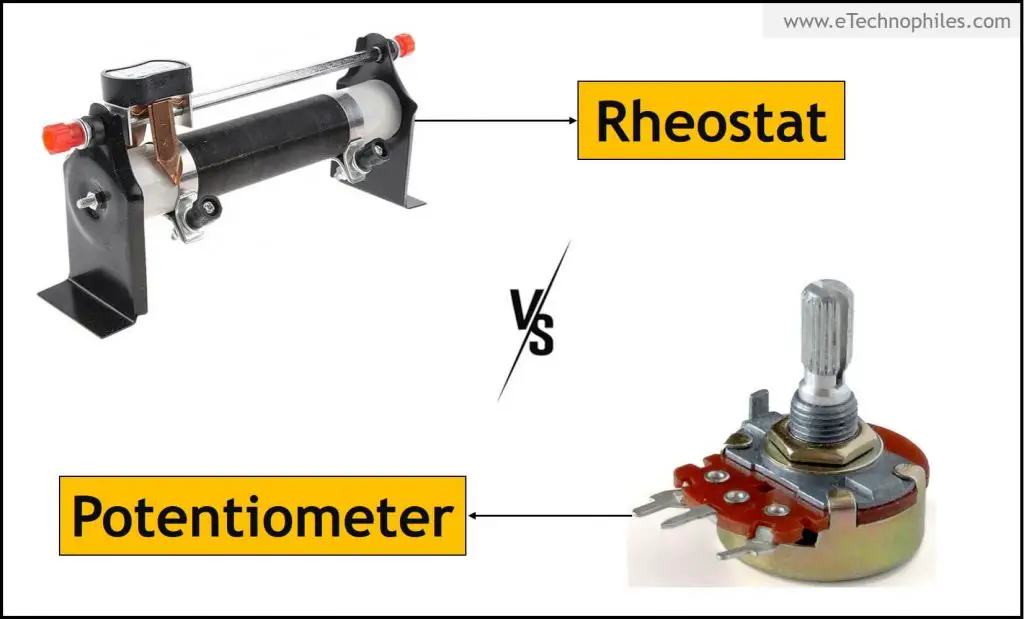
Now let’s look at what a rheostat is and how it differs from a potentiometer.
Table of Contents
What is a rheostat?
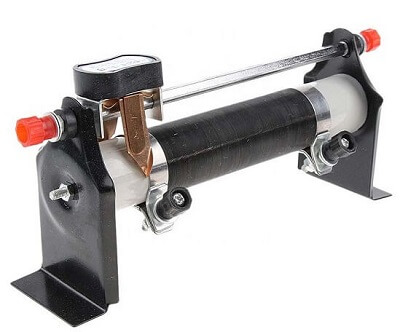
A rheostat is a two-terminal electrical device that is used to control the flow of current in a circuit. The resistance of the rheostat can be varied by adjusting the position of the contact arm. This allows the user to control the amount of current flowing through the circuit.
The word rheostat means “setter, regulating device” which is a variable resistor with two terminals.
What is a potentiometer?
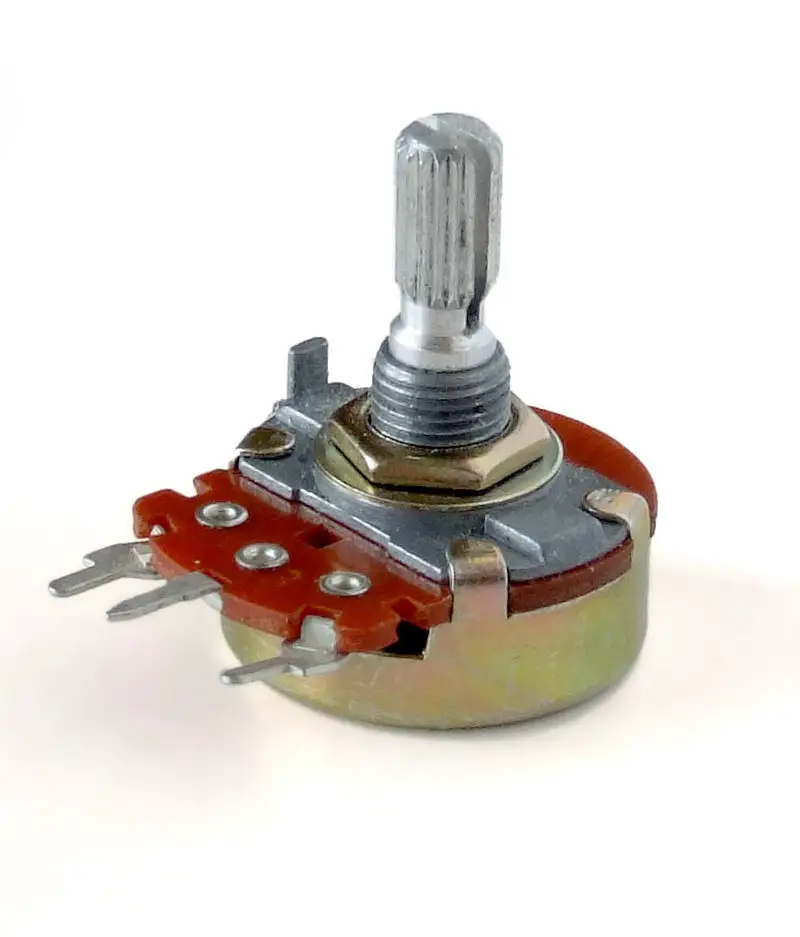
A potentiometer is a three-terminal electrical device, conventionally used to measure voltage. The contact arm or the middle terminal is also called the “Wiper”. The potentiometer can also be used as a rheostat by using only two terminals i.e, the wiper and any of the end terminals.
The remaining terminal is then used to measure the voltage at the point where the contact arm is located.
Difference between potentiometer and rheostat
There are several key differences between a potentiometer and a rheostat. A rheostat can only be used to control the current in a circuit while a potentiometer can be used to measure the voltage as well. A rheostat has two terminals while a potentiometer has three.
Also, the resistance of a rheostat can be varied by adjusting the position of the contact arm while the resistance of a potentiometer is fixed between the end terminals.
A potentiometer is used as a variable resistor(Rheostat )in low-power applications (less than 1 watt), with one terminal left open or unconnected. (Read more)
All the major differences between potentiometer and rheostat are given below:
| Potentiometer | Rheostat |
| Three terminal device | Two terminal device |
| Control the current in a circuit | Can measure the voltage as well |
| Has many applications | Used as a variable resistor only |
| Can be used as a rheostat | Cannot be used as a potentiometer |
| For high-power applications | For high power applications |
| Prone to damage | Rigid and durable |
| Small | Bulky |
How to use potentiometer as rheostat?
To use a potentiometer as a rheostat, you only need two terminals: any of the end terminals and the middle terminal. So when the wiper position changes, the resistance between these two points also changes.
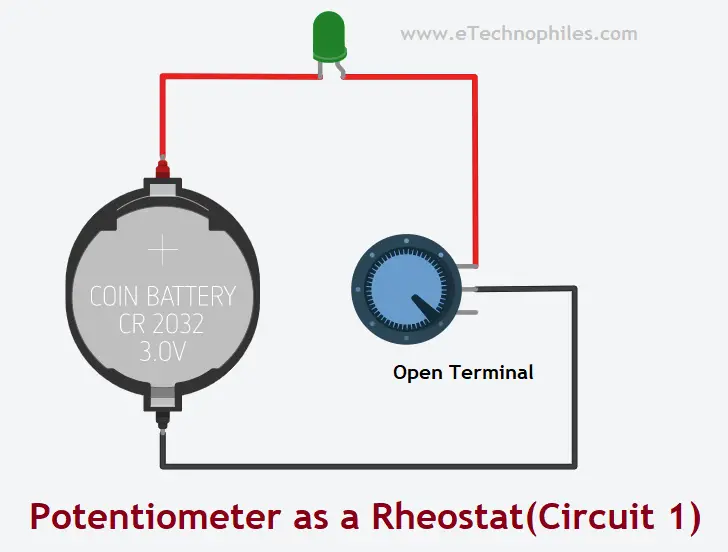
As you can see, when used like this, one terminal always remains unconnected or open. This is not a major problem but while designing a PCB, the software may display a warning.
To solve this problem, the open terminal and middle terminal are connected together. By doing this, nothing changes. The value of the resistance changes exactly like in the first circuit i.e. when the terminal is open.
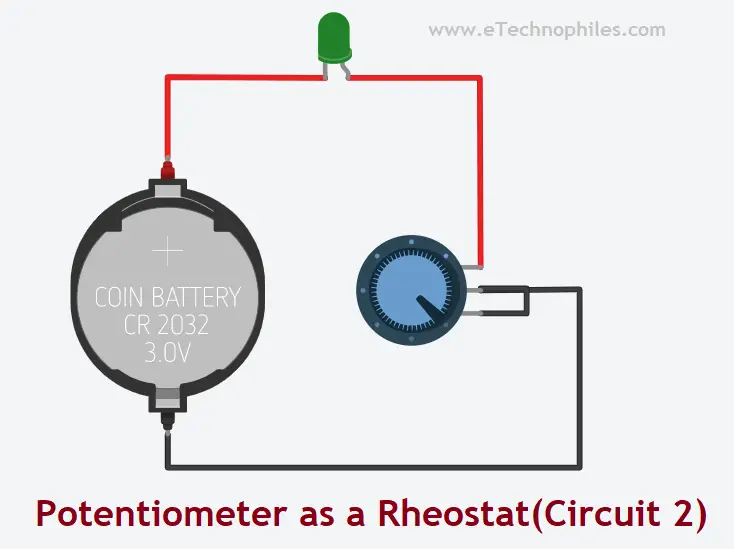
You will find this wiring example of “potentiometer as a rheostat” in many circuit diagrams.
Related: Potentiometer Wiring- 4 Simple Circuits using Potentiometer
Conclusion: potentiometer vs rheostat
A rheostat is an electrical device that is used to control the flow of current in a circuit while a potentiometer is an electrical device that is used to measure voltage. A potentiometer can also be used as a rheostat by using two of its three terminals. The key differences between a rheostat and a potentiometer are the number of terminals, the function, and the adjustable resistance.
FAQs
Why potentiometer is preferred over a rheostat?
Potentiometers are preferred over rheostats for precise voltage control and finer adjustments, while rheostats are used for controlling current in applications where a limited adjustment range and higher power handling capabilities.
What is the usage of Rheostats?
Rheostats are used to control electrical current by adjusting resistance. They are commonly used for dimming lights, controlling motor speed, and regulating heating elements.
Why do potentiometers have 3 pins?
The three-pin configuration enables the potentiometer to function as a variable resistor or voltage divider. By adjusting the position of the wiper (movable contact) relative to the input and reference terminals, the resistance or voltage output can be varied.
